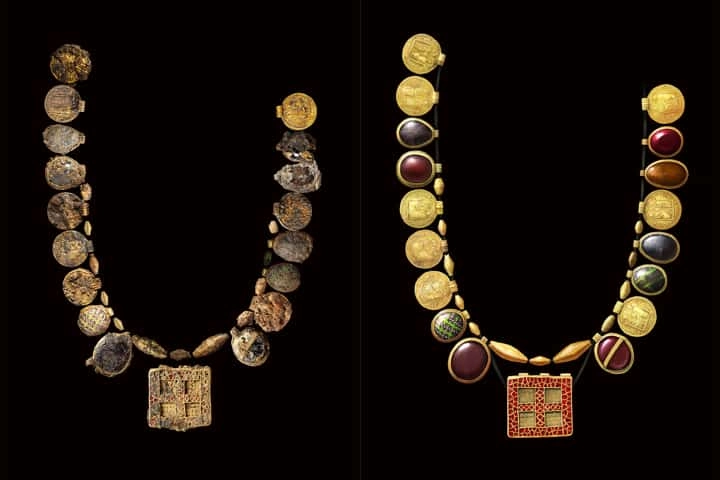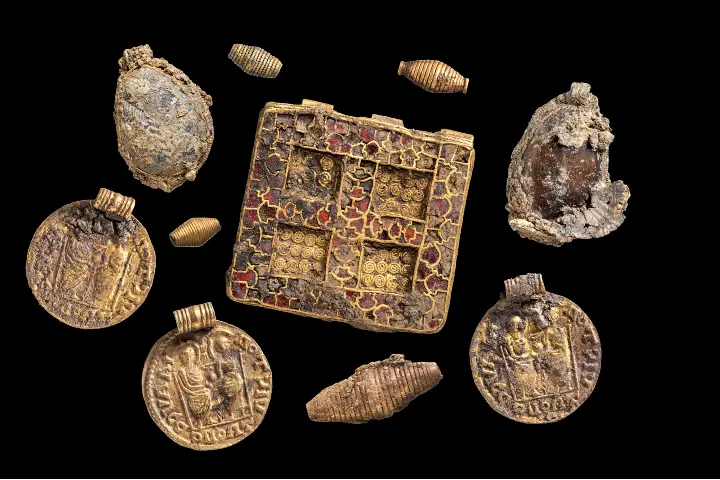In a major discovery, archaeologists have unearthed artefacts that provide insights into several aspects of medieval England when there was mingling of Christian traditions and pagan beliefs and women could hold high positions in Church.
As per a report in sciencealert.com this 1,400-year-old grave discovered near England in Northampton, is a vital find.
On April 11 this year, during the end of their eight-week excavation in Harpole – a small village – Levente-Bence Balázs archaeologist spied two teeth crowns, indicating a site for burial.
Talking about it, Balazs told The Guardian: “Then two gold items appeared out of the earth and glinted at me. These artifacts haven’t seen the light of day for 1,300 years, and to be the first person to see them is indescribable.”
What Balazs-led team from the Museum of London Archaeology had found was a magnificent 30-piece necklace. This piece of jewellery was made of Roman coins, glass, semi-precious stones and garnets.
While the remains on which the necklace was found had decayed, as it was generally worn by women, it would be fair to presume that the person was rich or was somebody holding a high rank in society.

Besides the necklace, other objects found buried with the woman were two decorated pots, a shallow copper dish and a large silver cross. An X-ray image of the cross which had fallen apart showed that it was decorated with silver human faces.
The objects found in the grave indicated that the person was living between 630 CE and 670 CE, a period during which there was association of Christian beliefs and paganism. Commenting on this Simon Mortimer, archaeology consultant told Associated Press: “Burying people with lots and lots of bling is a pagan notion, but this is obviously heavily vested in Christian iconography, so it’s that period of quite rapid change.”
The symbolism and richness of the artifacts indicate that she may have been an affluent Christian leader, probably head of an abbey or princesses.
Graves of high-status women have been discovered in English, some of them having similar necklaces but not many of these sites, dating back earlier than 7th Century CE.
With Christianity spreading, the practice of burying people with expensive objects like necklaces became less prevalent as it was looked down upon by early Christian churches, said Lyn Blackmore, an archaeologist at the Museum of London Archaeology.
Conversing with the media, she said: “The Harpole Treasure, it’s not the richest in terms of the number of artifacts but it is the richest in terms of investment of wealth…and it has the highest amount of gold and religious symbolism.”




















